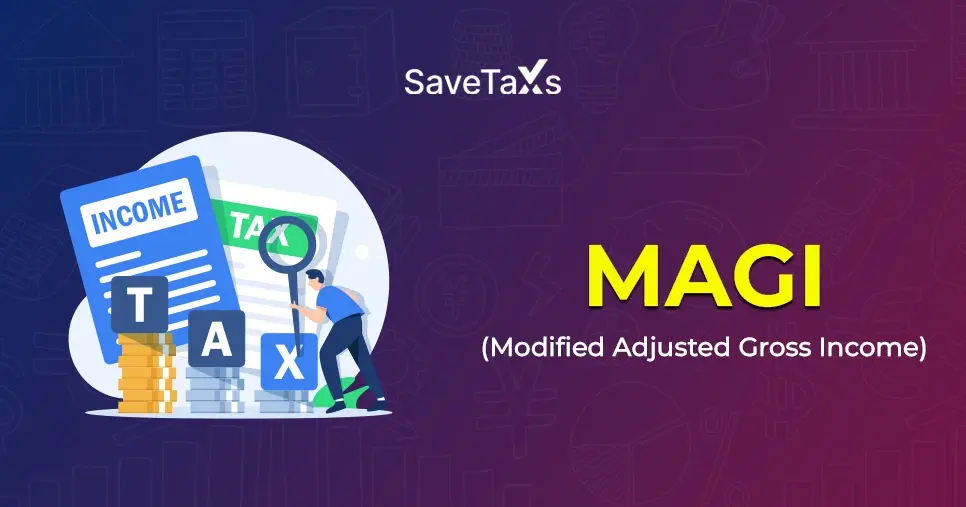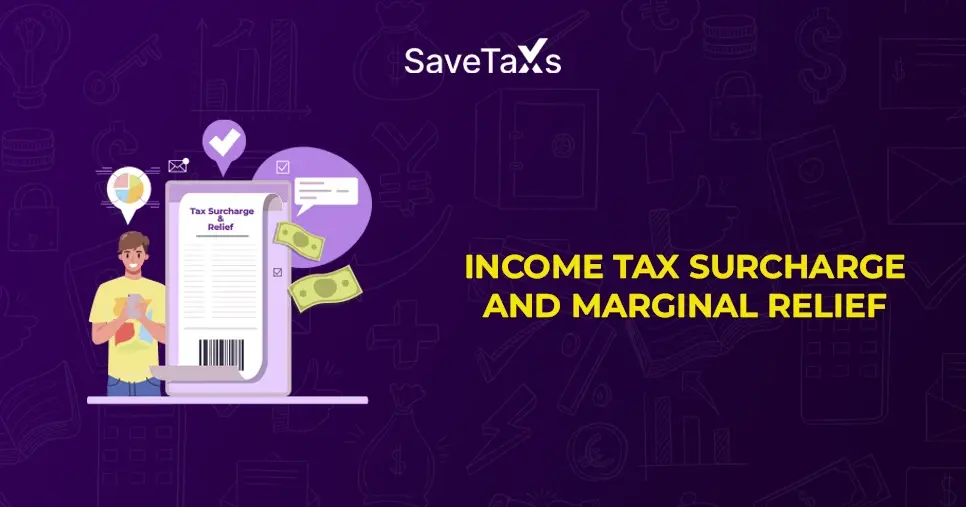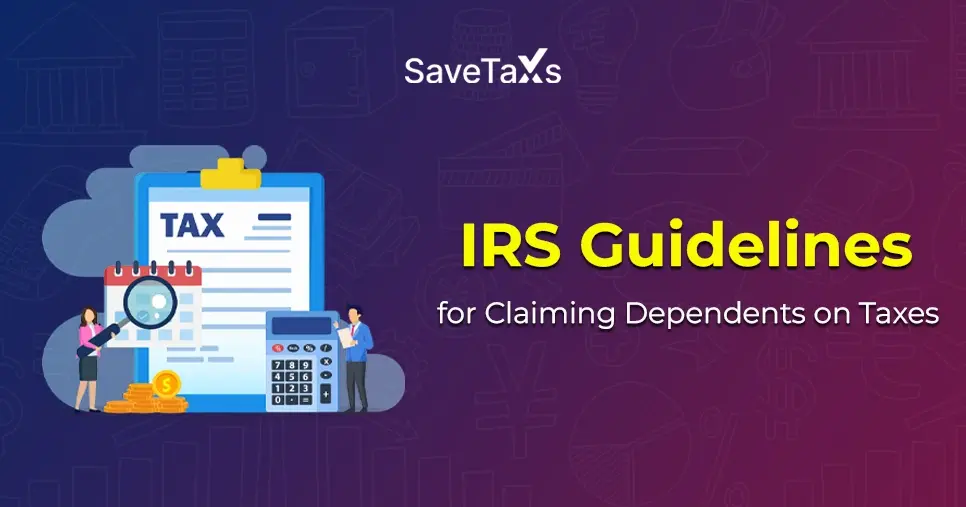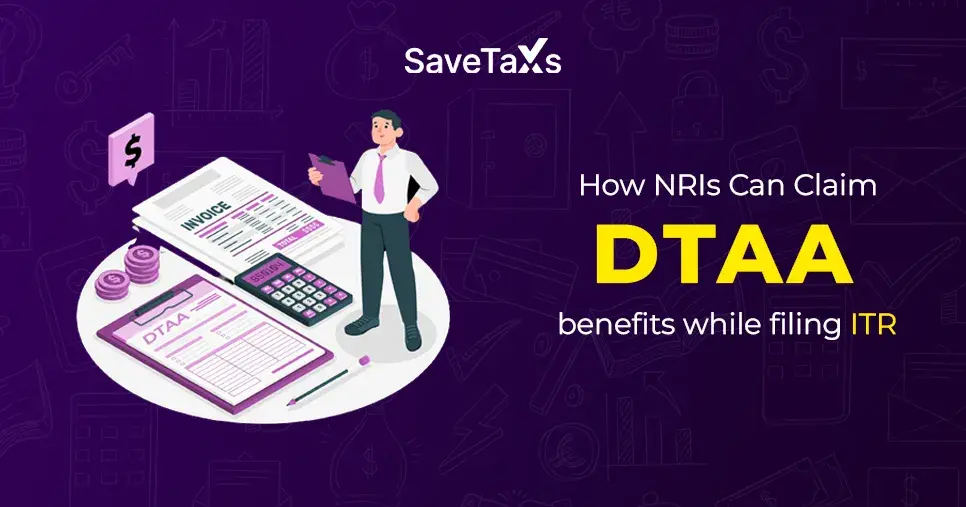- Key Takeaways
- What is Modified Adjusted Gross Income (MAGI)?
- What Does The MAGI Determine?
- Uses of MAGI
- Roth IRA
- Traditional IRAs
- How To Calculate Your MAGI
- Different MAGI Calculations
- What Is The Purpose Of MAGI
- What is the difference between the MAGI and AGI?
- Can AGI and MAGI be the same?
- Get Your MAGI Assessed By The Tax Professional
The modified adjusted gross income (MAGI) is the adjusted gross income plus the tax-exempt interest income and certain deductions. The Internal Revenue Code uses MAGI to determine whether a taxpayer qualifies for certain tax benefits.
For many individuals, their modified adjusted gross income is the same as their adjusted gross income. However, suppose you have a non-taxable security benefit, untaxed foreign income, and tax-exempt interest. In that case, you have to add these three components back to your AGI to calculate your MAGI.
In this blog, we will understand what MAGI is, including how to calculate it, our purpose, and more.
Key Takeaways
- The adjusted gross income is the individual's AGI plus specific tax exemptions and deductions added back.
- MAGI will either be equal to the AGI or higher.
- MAGI helps the IRS to determine the individuals' qualification for certain tax benefits. Such tax benefits include Roth IRA contributions, Traditional IRA, education tax credits, and other premium tax credits.
- The correct MAGI calculation is crucial for effective tax and long-term financial planning.
What is Modified Adjusted Gross Income (MAGI)?
Before we understand the MAGI, let us break it down and understand AGI. Adjusted gross income is your total (gross) income from all fair sources minus the tax adjustments mentioned in Schedule 1 of Form 1040.
The AGI is computed before you pick your itemized or standard deduction on the tax form 1040.
Now, coming onto the modified adjusted gross income. It is the same as your adjusted gross income, but the tax adjustments you subtracted from the total gross income to calculate the AGI are added back here. Such tax adjustments include tax-exempt interest income and other deductions.
Every taxpayer must know their MAGI to reduce their taxable income (with respect to the retirement account contributions). Knowing your MAGI also helps you understand whether you are eligible for benefits or not. Such tax benefits include the student loan interest deduction and the Child Tax Credit.
What Does The MAGI Determine?
The Internal Revenue Service (IRS) uses the modified adjusted gross income (MAGI) to see if the individual is eligible for certain tax benefits or not.
The modified adjusted gross income helps to determine:
- Whether or not an individual's income exceeds the level that makes them qualify to contribute to a Roth individual retirement account (IRA).
- Whether the individual can deduct their traditional IRA contributions or not depends on whether they or their spouse has retirement plans, such as a 401(k) at work.
- Whether the individual is eligible for the premium tax credits or not. These tax credits help to lower the cost of health insurance if the plan is bought through a federal or state health insurance marketplace.
Uses of MAGI
The modified adjusted gross income is an important factor in tax planning. It helps to determine whether you qualify for certain tax benefits or not. However, to be eligible for these credits and deductions, your MAGI must be within the set limits by the IRS.
MAGI is also used to determine eligibility for healthcare incentives and waivers under the Affordable Care Act (ACA) for the health insurance marketplaces in states.
Additionally, it is also used as a criterion for eligibility for state Medicaid programs.
Roth IRA
As mentioned above, the MAGI is also used to identify one's eligibility to contribute to a Roth IRA. Additionally, to contribute to the Roth IRA, your MAGI must be below the limits set by the IRS. Now, if you are within the threshold, the amount you can contribute is also computed by your MAGI.
In a case where the MAGI exceeds the allowed limits, the contributions made are phased out or disappear.
For better understanding, let us look at a table of Roth IRA and the income limits for the year 2025.
2025 Roth IRA Income Limits
| If your filing status is... | And your MAGI is ... | Then you can contribute... |
|---|---|---|
|
Married couples filing jointly or a qualifying widow(er) |
Less than $236,000 | Up to the limit |
| More than $236,000 but less than $246,000 | A reduced amount | |
| $246,000 or more | Zero | |
|
Single filer head of the household, married filing separately (given that you do not live with your spouse at all for the tax year) |
Less than $150,000 | Up to the limit |
| More than $150,000 but less than $165,000 | A reduced amount. | |
| $165,000 or more | Zero | |
|
Married individuals filing separately, and you have lived with your spouse for a time together during the tax year. |
Less than $10,000 | A reduced amount |
| $10,000 and more | Zero |
Traditional IRAs
If a taxpayer has continued to use more than they are allowed, the excess must be removed. Because, if not, they may face the tax penalty. The excess contribution is taxed at a rate of 6% per tax year until the excess amount remains in the IRA.
Based on you and your spouse's retirement plans at work and the modified adjusted gross income, it will be determined whether or not you can deduct the traditional IRA contributions. If a retirement plan at work covers neither you nor your spouse, then you can claim the full deduction, that is, the full amount of your contribution limit. However, in a case where either you are the source or you have a retirement plan, then the deduction is limited.
2025 Traditional IRA Income Limits
| If your filing status is | And your MAGI is | Then you can take |
|---|---|---|
|
Single filer or the head of household covered by a plan at work. |
$79,000 or less | The full deduction is up to the amount of your contribution limit. |
| $79,000 but less than $89,000 | Limited deduction | |
| $89,000 or more | No deduction at all | |
|
Married filing jointly or a qualifying widow(er) covered by a retirement plan at work. |
$126,000 or less | A full deduction is available. |
| $126,000 but less than $146,000 | A limited deduction | |
| $146,000 or more | No deduction | |
|
Married couples filing separately and are covered by a retirement plan at work. And the married individuals who are filing separately with a spouse who is covered by a retirement plan at work. |
$10,000 or less | A partial deduction |
| $10,000 or more | No deduction | |
| Single filers, the head of household, qualifying widow(er), married filing either separately or jointly, and are not being covered by a retirement plan at work, but their spouse is. | Any amount | A full deduction is available, which is up to the amount of your contribution limit. |
|
Married individuals, either filing separately or jointly, are not covered, but with a spouse who is covered by a retirement plan at work. |
$236,000 or less | A full deduction is available, which is up to the amount of your contribution limit. |
| $236,000 but less than $246,000 | A limited or partial deduction | |
| $246,000 or more | No deduction. |
Please note that US tax laws are complex and subject to periodic changes. Hence, it is advisable to consult a trusted tax expert regarding any help needed to figure out the MAGI or if any other matter, such as income limits and the IRA contribution.
How To Calculate Your MAGI
There are a lot of different ways to calculate MAGI. However, if we look at the commonly used approach, it is a three-step process.
Step 1: Calculate your gross income for the year,
Step 2: Calculate your adjusted gross income.
Step 3: Lastly, add a certain deduction to calculate your modified adjusted gross income.
Calculate the gross income for the year.
Gross income is the income that includes everything you have earned during the tax year, such as:
- Alimony: It is a payment made to the spouse due to separation or divorce as ordered by the Court.
- Business Income
- Capital Gains or any other gain made after selling an asset at a profit.
- Dividends: It is a cash payment made to the shareholders of the company.
- Interest
- Farm Income
- Rental and Royalty income
- Retirement Income
- Tips and the
- Wages
Now there are two conditions under which the alimony payment is not considered as the gross income. The first condition or the scenario is that if your divorce agreement was executed after 2018. The second is that if your divorce agreement was executed before 2019, but was modified later to state that the payments are not deductible for the payer.
Calculate Your Adjusted Gross Income
Calculating an individual's adjusted gross income is important. This is because AGI is the total taxable income calculated before standard deductions, itemized deductions, tax credits, and exemptions are taken into account.
This dictates how you can use the different tax exemptions nd credits.
The AGI is equal to the gross income, excluding specific tax-deductible expenses. This includes
- Certain business expenses for reservists, fee-based government professionals, and performing artists.
- Educator expenses
- Half of any self-employed taxes.
- Health insurance premiums (if you are a self-employed individual).
- Health Savings Account (HSA) contributions.
- Moving expenses related to armed force members' active duty.
- Penalties for early withdrawal of the savings.
- Retirement plan contributions, which include the IRA and the self-employed retirement plan contributions.
- The student loan interest.
Here is a tip: You can either calculate the AGI. Or you can find it on Form 1040 line 11.
Add The Specific Deductions Back
Now, to calculate the MAGI, take your AGI and add these back:
- Any deduction you take for IRA contributions and taxable Social Security payments.
- The deduction that you took for the student loan interest.
- Tuition and fees deductions
- Half of the self-employment tax
- Excluded foregin Income
- Interest from EE savings bonds, which were used to pay the expenses related to higher education.
- Losses from a partnership
- Passive income or loss
- The rent losses
- The exclusion of the adoption expense.
Different MAGI Calculations
MAGI is calculated in different ways based on how an individual is goint ot use the MAGI. As we know, the modified adjusted gross income is used to determine eligibility for certain tax benefits, assistance programs, and subsidies.
Now, depending on which context MAGI is used, the calculation will be done likewise. Here is a rundown of a list of program taxes and the benefits that are used in the calculation of MAGI.
For instance, if you are asked to calculate MAGI for any of the government programs or the tax credit, you have to be aware of which MAGI calculation is required. As not all formulas are the same, being mifgul is essential.
Here are some examples:
- IRS Deductions: Take your AGI and then add back any certain traditional IRA contributions related deduction.
- Student Loan Interest Deduction: Take your AGI and then add back deductions related to student loan interest that you have claimed.
- Self-Employment Tax: Take your AGI and then add back deductions related to self-employment taxes.
- Excluded foreign income: Take your AGI and add back the foreign income that has been excluded.
- Other Tax Exempt Income: Take your AGI and then add the certain tax-exempt income. Such income includes municipal bond income.
- Social Security Benefits: Take your AGI and add the portion of the Social Security benefits.
What Is The Purpose Of MAGI
As mentioned, the purpose of MAGI is to determine whether or not you qualify for the specific tax programs and benefits.
MAGI also helps determine the amount an individual is allowed to contribute towards a Roth IRA. Additionally, knowing your modified adjusted gross income helps to avoid any tax penalties associated with over-contributing to these programs. It is stated that overcontributions in such programs can lead to interest payments and fines.
MAGI also helps you determine eligibility for government programs. Such programs are the subsidized insurance plans available on the Health Insurance Marketplace.
What is the difference between the MAGI and AGI?
As per the IRS, the MAGI is your adjusted gross income with the addition of certain elements. Such elements are the student loan interests, IRA contributions, foreign income, passive income or losses, qualified education expenses, and more.
Can AGI and MAGI be the same?
Yes, the modified adjusted gross income and the adjusted gross income can be he same. For many taxpayers, the deduction list, which is needed to add back in AGI to calculate MAGI, is not relevant.
For example, anyone who did not earn any foreign income cannot use that deduction. Hence, there are no earnings related to foreign income for them to add back in their adjusted gross income (AGI).
Get Your MAGI Assessed By The Tax Professional
Knowing your adjusted gross income is very important for your tax returns. As the name suggests, MAGI is nothing but your adjusted gross income modified for taxes, deductions, exemptions, and allowances.
However, calculating your MAGI as someone who does not have a knack for calculating taxes can be tough. As there are very minimal details to consider while calculating the MAGI. Such as the different calculation methods, the tax deduction, credits, and allowances to be added, and more of this can be pretty overwhelming. And if you computed your MAGI wrong, fines and penalties are coming your way.
Hence, it is advisable to have your MAGI calculated with the assistance of a tax professional. Such a tax professional is Savetaxs.
We will help you identify your MAGI and everything around it. Right from the AGI calculation to the MAGI calculation, adding the right and appropriate deduction back, consulting you on the IRA income limits, and a lot more, our experts will help you through it all.
With Savetaxs, a hassle-free process is guaranteed. Connect with us today, get your MAGI calculated, and enjoy the tax benefits.

Mr Varun is a tax expert with over 13 years of experience in US taxation, accounting, bookkeeping, and payroll. Mr Gupta has not prepared and reviewed over 5000 individual and corporate tax returns for CPA firms and businesses.
- What is Adjusted Gross Income (AGI)?
- Understanding Form 1065 (Partnership Tax Return)
- Self Employment Tax: Meaning & How To File It
- Know Your Tax Deadlines for 2025: When and Where to File?
- 9 US States With No Income Tax
- What is IRS Tax Form 1120?
- Difference Between Residents And Non-Residents Aliens And Their Taxes
- Everything to Know About the 1040-SR Form for Filing Seniors
- What is an S corp - Overview, Taxes and How To File
- What is Form 1040-NR
Want to read more? Explore Blogs
Frequently Asked Questions
No matter what your source of income is, we've got you covered. There’s a plan for everybody!
Modified adjusted gross income is your AGI plus certain adjustments added back.
Common additions include:
- Tax-exempt interest income.
- Foreign earned income and housing exclusions.
- Passive income and loss adjustments.
- IRA contributions or student loan interest deductions made.
Your gross annual income is the total income that you earn before any taxes or deductions are made.
This includes:
- Salary or wages.
- Bonus and commissions.
- Rental Income.
- Business income..
- Investment Income made, such as dividends, interest, and capital gains.
The primary purpose of the modified gross income is to determine eligibility for certain tax benefits and deductions. These benefits and deductions include:
- IRA contributions
- Premium tax credits for health insurance
- Deduction eligibility for the student loan interest.
- And the other federal tax credits and benefits.
MAGI further helps the IRS to decide which taxpayers are eligible for these income-based tax provisions.
To lower your MAGI, you must
- Contribute to retirement accounts such as the 401(k), Traditional IRA
- Make health savings account (HSA) contributions
- Claim business expenses if you are self-employed.
- Deduct the student loan interest.
- Make charitable donations.
In a nutshell, lowering your MAGI will increase your eligibility for the tax deductions and credits.









-DEDUCTION-ON-HOSUING-LOAN_1756903528.webp)






_1766059659.webp)


_1764918370.webp)
